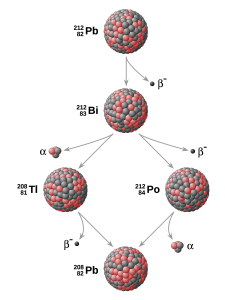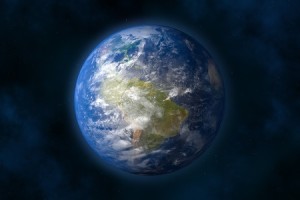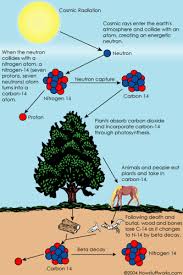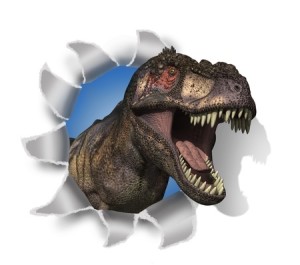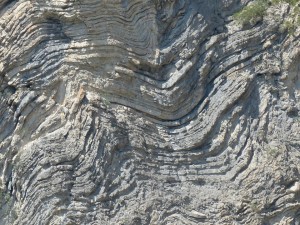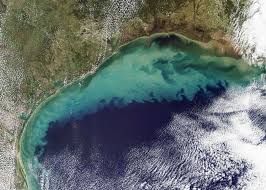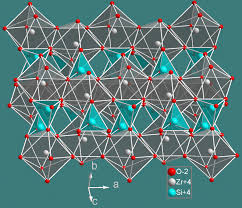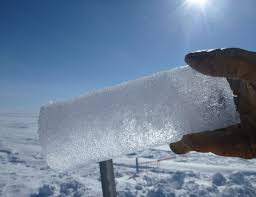Argument: The layers of the Earth. They change the concentration of oxides as you go deeper, implying that the atmosphere had less oxygen.
Answer: 1.
Complexity of geologic processes: The processes that form the Earth's layers are extremely complex and not necessarily linear. Factors such as volcanic activity, plate tectonics, and catastrophic events can significantly change the composition of the layers in relatively short periods of time.
2.
Dating assumptions: Many of the dating techniques used to estimate the age of the Earth's layers rely on assumptions about radioactive decay rates and initial conditions that may not be entirely accurate.
3. Local variability: The composition of the Earth's layers can vary significantly from one location to another, making it difficult to make generalizations about the global atmospheric composition based on limited samples.
4. Rapid formation processes: There is evidence that certain geologic processes can occur much more rapidly than previously thought, which could explain the formation of complex layers in shorter periods of time.
5. Data interpretation: The interpretation of geological data often relies on pre-existing models, which can lead to circular conclusions about the age of the Earth and the evolution of the atmosphere.
6. Rapid geological processes: Recent evidence shows that certain geological processes can occur much more rapidly than previously thought. For example, the formation of canyons, once thought to take millions of years, has been observed to occur within days of catastrophic events.
7. Assumptions in radiometric dating: Radiometric dating techniques rely on assumptions about decay rates and initial conditions that may not always be accurate. Variations in decay rates or contamination of samples could lead to overestimates of age.
8. Evidence of global catastrophes: There is geological evidence of large-scale catastrophic events that could have significantly altered the structure of the Earth in a short period of time.
9. Preservation of organic material: The discovery of soft tissue preserved in supposedly ancient fossils raises questions about the true age of these specimens.
10. Magnetic fields and erosion rates: The decay of the Earth's magnetic field and the observed erosion rates in some geological formations are more consistent with a younger Earth.[/size]
11. Initial assumption: Radiometric dating relies on assumptions such as the initial amount of isotopes present. If these assumptions are incorrect, the calculated ages may be inaccurate.
12. Decay Rates: The technique assumes that radioactive decay rates have been constant over time. Catastrophic events could have altered these rates.
13. Contamination: The presence of foreign materials can contaminate samples, altering the isotope ratio and leading to erroneous results.
14. Instrument Calibration: The accuracy of measuring instruments can affect the results. If the calibration is incorrect, the dates derived may not be reliable.
15. Complex Geological Environment: Rocks may have undergone complex geological conditions that alter the isotope ratio, complicating the interpretation of the data.
16. Data Interpretation: Scientists interpret the data based on theoretical models. If these models are incorrect, the conclusions may also be incorrect.
17. Variability of erosion rates: Erosion rates can vary dramatically over short periods due to catastrophic events such as large-scale floods, making it questionable to extrapolate current rates into the distant past.
18. Accelerated sedimentation: Evidence suggests that large volumes of sediment can accumulate rapidly under certain conditions, such as after major catastrophes, challenging the assumption of slow, constant sedimentation rates.
19. Interpretation of layers: Interpreting sedimentary layers as representing long periods of time can be misleading, since multiple layers can form rapidly in single events.
20. Limitations of dating techniques: Techniques used to date sedimentary layers often rely on assumptions that may not be valid for all past geological conditions.
21. Evidence of rapid deposition: There are examples of complex geological formations that show signs of having been deposited rapidly, contradicting the idea of slow processes over millions of years.
22. Influence of global events: Large global events, such as possible planetary-scale floods, could have caused erosion and sedimentation patterns very different from those observed today.
23. Preservation of fragile structures: The presence of delicate sedimentary structures in some geologic formations suggests rapid deposition and lithification, incompatible with long time periods.
24. Rates of continental erosion: Current rates of continental erosion, if extrapolated backward in time, suggest that the continents should have been eroded several times, which is not observed.
25. Rapid canyon formation: Modern observations of rapid canyon formation after catastrophic events challenge the idea that these structures necessarily take millions of years to form.
26. Broad sedimentary layers: The existence of sedimentary layers that extend over vast geographic areas suggests large-scale, rapid depositional events rather than slow, gradual processes.
Fossils: When analyzing fossils and evolutionary records, several important considerations arise, especially regarding the preservation of soft tissues1. Unexpected preservation: The discovery of soft tissues, such as collagen, in supposedly very old fossils is surprising, considering the relatively short half-life of these molecules.
2. Half-life of collagen: Collagen has an estimated half-life of about 130,000 years under ideal conditions. The presence of this protein in fossils dating back millions of years raises questions about the accuracy of dating.
3. Temporal inconsistency: The preservation of soft tissues in very old fossils seems inconsistent with current understanding of organic decomposition over geologic time.
4. Challenge to conventional dating: The presence of collagen and other soft tissues in dinosaur fossils, for example, challenges conventional dating that assigns ages of tens or hundreds of millions of years to these specimens.
5. Preservation conditions: The conditions required to preserve soft tissues for such long periods are extremely rare and unlikely, suggesting that these fossils may be much more recent than previously thought.
6. Limits of fossilization: Fossilization usually replaces organic material with minerals. The presence of original organic tissue calls into question the long-term processes of fossilization.
7. Implications for evolution: If these fossils with soft tissues are indeed more recent, this could imply a significant revision of currently accepted evolutionary timescales.
8. Dating methods: The discrepancy between radiometric dates and soft tissue preservation suggests that there may be problems with dating methods or with our understanding of the degradation of biomolecules.
9. Rapid burial hypothesis: The preservation of soft tissues could be explained by rapid, catastrophic burial rather than slow processes over millions of years.
10. Need for reassessment: The consistent presence of soft tissues in many "old" fossils indicates the need for a critical reassessment of dating methods and theories of long-term fossil preservation.
Astronomical observations When considering astronomical observations and comparisons with other celestial bodies, some interesting points emerge that may challenge conventional views about the age of the Earth:1. Decaying magnetic field: Earth's magnetic field is decaying at a measurable rate. If this rate were extrapolated back in time, the magnetic field would have been impossibly strong only a few tens of thousands of years ago.
2. Lunar retreat: The Moon is moving away from Earth at a rate of a few centimeters per year. If this rate were constant and extrapolated back in time, the Moon would have been in contact with Earth for much less time than the conventional age of the Earth-Moon system suggests.
3. Lunar dust: The Apollo missions found much less dust on the lunar surface than expected, given estimates of dust accumulation over billions of years.
4. Short-period comets: These comets lose mass with each orbit and have a limited lifespan. The continued existence of these comets suggests that they may be younger than previously thought.
5. Saturn's rotation: Saturn's rotation rate appears to be slowing down more rapidly than long-period models predict, suggesting that the planet may be younger.
6. Titan's atmosphere: Saturn's moon Titan still has a substantial methane atmosphere, which should have dissipated long ago if the solar system is billions of years old.
7. Internal heat of the giant planets: Jupiter, Saturn, Uranus, and Neptune still emit more heat than they receive from the Sun, which is difficult to explain if these planets are billions of years old.
8. Saturn's rings: Saturn's rings appear to be younger and more dynamic than one would expect in an old solar system.
9. Planetary magnetic fields: The existence of magnetic fields on planets like Mercury is surprising, given that such fields should have decayed long ago in an old solar system.
10. Volcanism on Io: The intense volcanic activity on Jupiter's moon Io is difficult to explain if the solar system is billions of years old, since the moon should have cooled significantly.
11. Faint Young Sun Paradox: Astrophysical models suggest that the Sun should have been 30% dimmer 4.5 billion years ago. However, geological evidence suggests that the Earth had liquid water and moderate temperatures at that time. This discrepancy is difficult to explain with current models of solar and terrestrial evolution.
Argument: Continental drift also, even if it had been much greater earlier, would have killed everyone on the young Earth (earthquakes and tsunamis).
Answer: 1. Lack of ancient sediments: If the continents had been moving slowly for billions of years, we should find very old marine sediments on the continents. However, the oldest sediments found are much younger than expected.
2. Preservation of geologic features: Many geologic features, such as canyons and mountain formations, appear to be too young to have survived billions of years of erosion and slow tectonic changes.
3. Rapid formation of mountain ranges: Evidence suggests that large mountain ranges, such as the Himalayas, formed much more rapidly than predicted by slow plate motion models.
4. Continuous sedimentary layers: The existence of sedimentary layers extending across vast continents suggests rapid, catastrophic deposition rather than slow processes over millions of years.
5. Folds in rocks without fractures: Many rock formations show intense folds without fractures, indicating that they were deformed rapidly while they were still malleable, rather than over millions of years.
6. Remnant magnetism in rocks: Remnant magnetism in rocks suggests that continents moved much more rapidly than suggested by old-Earth models.
7. Current rates of erosion: Current rates of continental erosion, if extrapolated backward in time, suggest that the continents should have been completely eroded several times if the Earth were billions of years old.
8. Rapid formation of geologic features: Modern observations show that large geologic features, such as canyons, can form rapidly in catastrophic events, defying the need for long time periods.
9. Evidence of global catastrophes: Broad, uniform sedimentary layers suggest large-scale, rapid depositional events rather than slow, gradual processes over billions of years.
10. Preservation of organic material: The presence of organic material, such as collagen, in supposedly ancient fossils is inconsistent with the idea of long periods of geologic time.
Argument: And there is the asteroid that fell near Mexico leaving a trail of Iridium
Answer: 1. "If it were during the flood (it wouldn't raise dust)":
Rebuttal: The impact of a large enough asteroid could generate a significant amount of debris and dust, even in a global flood scenario. The collision with the Earth's crust, even partially submerged, could still throw large amounts of material into the atmosphere.
2. "If it were before the flood it would kill the species":
Rebuttal: In a young Earth model, the asteroid impact could have been part of a series of catastrophic events, possibly related to the beginning of the flood. Some species could have survived in less affected areas or through preservation mechanisms that are not yet fully understood.
1. Global iridium layer: The global iridium layer, attributed to an asteroid impact near Mexico (K-Pg event), presents challenges for the old-Earth model:
a) Preservation of the layer: The preservation of this thin iridium layer for a supposed 66 million years is surprising, considering the active geological processes.
b) Global continuity: The presence of this layer on several continents suggests rapid and uniform deposition, more consistent with a recent catastrophic event.
c) Absence of bioturbation: In many locations, the iridium layer shows no signs of biological disturbance, which would be expected over millions of years.
2. Evidence of multiple impacts: Some researchers argue that there is evidence of multiple asteroid impacts in a short period of time, which could indicate a single catastrophic event rather than events spaced millions of years apart.
3. Rapid ecological recovery: The fossil record shows a relatively rapid recovery of biodiversity after the presumed extinction event, which is more consistent with a recent event than one that occurred tens of millions of years ago.
4. Evidence of global catastrophe: The asteroid event, together with other geological evidence, suggests a scenario of multiple catastrophic events in a short period of time, more consistent with a young Earth.
5. Rapid formation of geological features: The asteroid impact demonstrates how large geological changes can occur rapidly, supporting the idea that many features on Earth may have formed over much shorter periods of time than traditionally assumed.
6. Inconsistencies in the geologic column: The presence of the iridium layer at different levels of the geologic column in different locations challenges the idea of a uniform, slow sequence of deposition over millions of years.
Argument:If it was during the flood (it wouldn't raise dust).
If it was before the flood, it would kill the species.
And if it was after, it would kill humanity.
Answer: I understand that you are presenting an argument against the idea that the asteroid impact would be related to the flood or to a young Earth scenario. I will analyze this argument and present possible rebuttals:
3. "And if it was after, it would kill humanity":
Rebuttal: In a young Earth scenario, the impact could have occurred when the human population was still relatively small and geographically concentrated. Furthermore, the effects of the impact could have been less severe than initially thought, allowing part of the human population to survive.
1. Rapid deposition: The iridium layer could have been deposited rapidly during or shortly after catastrophic events associated with the Flood, not necessarily by a single asteroid impact.
2. Multiple impacts: Some young-Earth models propose multiple impacts over a short period of time, possibly related to disruptions in the solar system during or shortly after the Flood.
3. Reinterpretation of the evidence: The geological and paleontological evidence could be reinterpreted in the context of rapid catastrophic events rather than slow processes over millions of years.
4. Selective preservation: The fossil record could represent selective preservation of organisms during catastrophic events rather than a slow evolutionary progression.
5. Questionable dating: The radiometric dating techniques used to establish the age of the impact and associated geological layers could be questioned based on assumptions about initial conditions and decay rates.
While the argument presented raises valid questions, there are possible explanations and reinterpretations of the evidence that could accommodate the asteroid impact event within a young-Earth model. These alternative explanations challenge conventional interpretations and suggest that more research is needed to fully understand Earth's geologic history.




 Does the Bible teach that creation took place in seven literal days? Or could it be read as teaching seven long ages of creation? This has been a great debate among Bible believers for centuries, causing some to view the Bible as conflicting with the findings of modern science. As a result, many Bible teachers have felt the need to insist that the creation days aren’t literal 24 hour days, in order to make Genesis conform to scientific facts. But two questions need to be asked. First, does Genesis really teach literal days or can it be interpreted as teaching long ages? That will be the subject of this article. Second, what exactly are those scientific facts about earth’s age and creation, and is it possible to have more than one interpretation of the scientific evidence? We will address the second question in future articles in this series.
Does the Bible teach that creation took place in seven literal days? Or could it be read as teaching seven long ages of creation? This has been a great debate among Bible believers for centuries, causing some to view the Bible as conflicting with the findings of modern science. As a result, many Bible teachers have felt the need to insist that the creation days aren’t literal 24 hour days, in order to make Genesis conform to scientific facts. But two questions need to be asked. First, does Genesis really teach literal days or can it be interpreted as teaching long ages? That will be the subject of this article. Second, what exactly are those scientific facts about earth’s age and creation, and is it possible to have more than one interpretation of the scientific evidence? We will address the second question in future articles in this series. We saw from a previous article that if the Bible writer’s wanted to convey that the earth was created in six literal days around 6-8,000 years ago, they could not have been much clearer about it than they are in Genesis 1. But many otherwise fine Bible apologists sweep this option aside, even though they know the facts about the text. This is because they believe that the scientific evidence shows clearly that the Earth is billions of years old. But there are also good Bible apologists and credentialed scientists out there that hold to a young earth. Is this second group composed of all crackpots, or do they have some evidence to challenge the billion year old earth conclusion?
We saw from a previous article that if the Bible writer’s wanted to convey that the earth was created in six literal days around 6-8,000 years ago, they could not have been much clearer about it than they are in Genesis 1. But many otherwise fine Bible apologists sweep this option aside, even though they know the facts about the text. This is because they believe that the scientific evidence shows clearly that the Earth is billions of years old. But there are also good Bible apologists and credentialed scientists out there that hold to a young earth. Is this second group composed of all crackpots, or do they have some evidence to challenge the billion year old earth conclusion?
